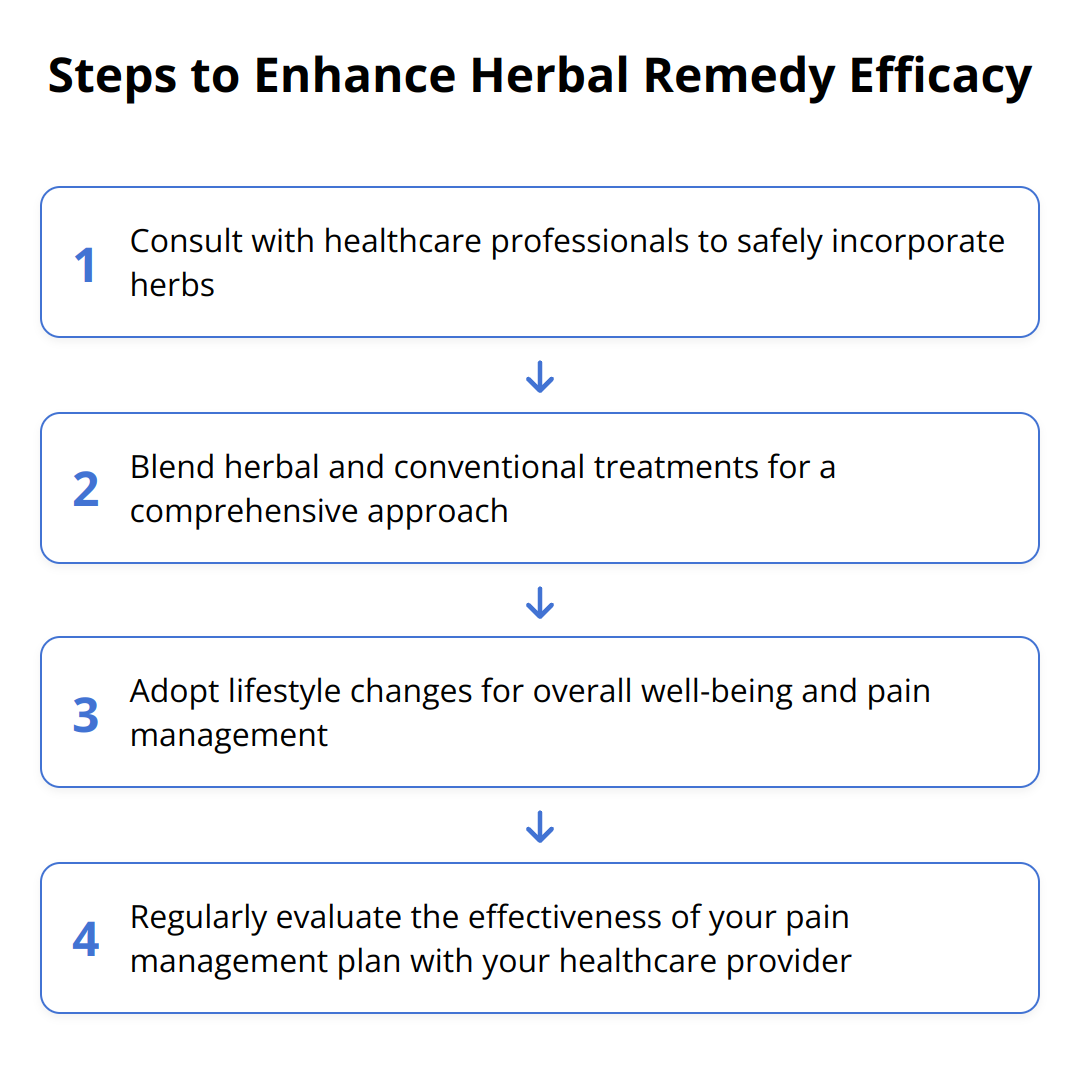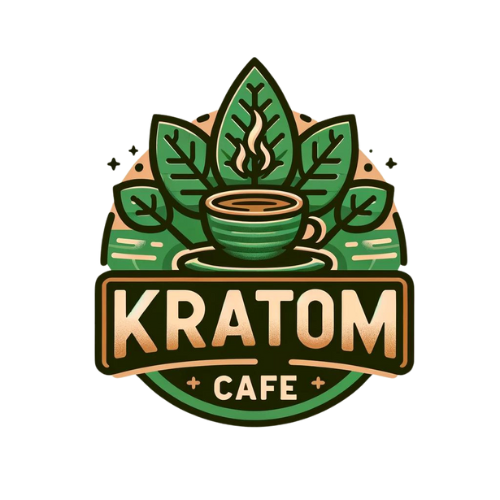Living with chronic pain is a daunting reality for many. It’s a condition that persistently affects the quality of life, often leading to a relentless search for relief. We at Kratom Cafe understand the importance of exploring all avenues of treatment, including the potential of herbal remedies. This post aims to guide those new to the world of herbs for managing chronic pain.
Understanding Chronic Pain
Chronic pain is more than just a nuisance; it’s a complex condition that can dramatically alter every facet of an individual’s life. Defined as pain that lasts more than three months, it comes in various forms, including arthritis, nerve pain, and back pain, among others. Its causes are just as varied, ranging from injuries and surgeries to diseases like fibromyalgia and cancer. The true challenge of chronic pain lies not only in its physical sensations but also in its impact on daily life, hampering one’s ability to work, enjoy leisure activities, and even perform simple tasks.
The Many Faces of Chronic Pain
Chronic pain isn’t a one-size-fits-all ailment. Identifying the type you’re dealing with is the first step towards effective management. For instance, neuropathic pain, resulting from nerve damage, presents a different set of challenges than the pain associated with conditions like osteoarthritis. Recognizing the type of pain is pivotal because it influences the choice of herbs and treatments that might be most beneficial for you.
Triggers of Chronic Pain
Understanding the common causes of chronic pain is essential. Injuries that fail to heal properly can lead to lingering discomfort, as can surgeries through scar tissue formation. However, it’s critical to acknowledge diseases like fibromyalgia, which causes widespread pain without visible injury, highlighting the complexity of pain management. Such knowledge empowers individuals to approach their pain with a tailored strategy that addresses the root cause, not just the symptoms.

The Ripple Effect on Life
The impact of chronic pain extends beyond physical discomfort. It can lead to significant stress, affecting mental health by increasing the risk of conditions like depression and anxiety. Sleep disturbances are common, further exacerbating pain and creating a vicious cycle of sleeplessness and discomfort. Social isolation is another risk, as chronic pain sufferers may find it challenging to participate in social activities, deepening the sense of alienation and loneliness.
In essence, the journey to managing chronic pain begins with a deep understanding of its nature, causes, and effects. Embracing a comprehensive approach that includes lifestyle adjustments, psychological support, and potentially, herbal remedies, can pave the way to not just coping but thriving despite chronic pain.

For those exploring herbal remedies, it’s wise to seek detailed, condition-specific guidance. Resources like the guide on using kratom for wellness offer insight into how natural options can complement traditional pain management strategies. Remember, effective pain management is a holistic endeavor that combines knowledge, self-care, and sometimes, the wisdom of nature.
Herbal Pain Relief
Turning to nature might offer some solace for those battling chronic pain. A holistic approach, integrating herbs with anti-inflammatory and analgesic properties, could be the key to managing discomfort more naturally. Let’s explore three powerful herbs that have stood the test of time in offering pain relief.
Ginger, a common kitchen spice, packs a potent anti-inflammatory punch. Its active component, gingerol, works by inhibiting inflammatory compounds. People experiencing muscle pain, osteoarthritis, or rheumatoid arthritis might find ginger particularly beneficial. Incorporating ginger into your diet is easy. Add it to your meals, sip on ginger tea, or consider supplements for a more concentrated dose. The goal is to make ginger a regular part of your pain management regimen.
Turmeric, another culinary staple, is renowned for its curcumin content, which provides its anti-inflammatory benefits. Curcumin targets multiple steps in the inflammation pathway at the molecular level. However, curcumin is not easily absorbed by the body. Combining turmeric with black pepper, which contains piperine, enhances absorption significantly. Using turmeric in cooking is a great start, but for more severe pain, supplements might offer the necessary potency. It’s essential to select high-quality turmeric or curcumin supplements to ensure maximum effectiveness.
Willow bark, the inspiration behind aspirin, has been used for centuries to ease pain and reduce inflammation. The active component, salicin, is converted in the body to salicylic acid, which has analgesic and anti-inflammatory effects. Willow bark can be taken as a tea, tincture, or in capsule form. It’s especially useful for those suffering from headaches, low back pain, and osteoarthritis. However, like aspirin, it may not be suitable for everyone, especially those with conditions that prevent them from taking nonsteroidal anti-inflammatory drugs (NSAIDs).
In keeping with a focus on actionable advice, here are a few pointers when considering these herbs:
-
Start with small doses to see how your body reacts.
-
Consult with a healthcare professional, especially if you’re taking other medications.
-
Quality matters. Opt for reputable brands and sources.
-
Be patient. Natural remedies might take time to show effects.

For those looking to dive deeper into herbal remedies, the guide on kratom for wellness provides further insight into managing pain and enhancing overall wellbeing with herbs.
This exploration into natural pain relief underscores the potential of herbs in offering a more holistic approach to chronic pain management. While herbs might not replace medical treatments, they can complement them, offering additional relief and support in the journey towards wellness.
Making Herbs Work for Pain Relief
After understanding the basics of chronic pain and the potential of herbs in managing this condition, it’s time to focus on effectively incorporating these natural options into your pain management plan. This chapter offers actionable advice on how to make herbal remedies a part of your strategy to combat chronic pain, emphasizing the importance of consulting healthcare professionals, blending these remedies with conventional treatments, and adopting lifestyle changes to maximize their effectiveness.
Talk to Your Healthcare Provider
First and foremost, any effective pain management plan begins with a conversation with your healthcare provider. It’s vital to include them in your decision to use herbal remedies. Some herbs can interact with prescription medications, affecting their efficiency or leading to adverse effects. Your doctor can help you navigate these potential issues, ensuring that your herbal regimen complements your existing treatment plan safely. For those interested in using kratom specifically, this kratom pain relief guide can offer valuable insights to discuss with your healthcare provider.
Blending Natural with Conventional
Integrating herbal remedies with conventional medical treatments requires a balanced approach. It’s not about choosing one over the other but rather understanding how they can work together for optimal pain relief. For example, while willow bark may offer relief for low back pain, it should not replace therapies prescribed by your physician but instead, it could serve as a supplementary treatment. Blending natural and conventional methods provides a comprehensive approach to managing chronic pain, addressing both symptoms and underlying causes.
Lifestyle Adjustments for Enhanced Results
To enhance the efficacy of herbal remedies, certain lifestyle changes can be instrumental. These adjustments not only promote overall well-being but they also spare you from exacerbating your chronic pain condition. Consider these practical tips:
-
Regular Exercise: Staying active helps in managing pain levels and improving mobility. Focus on low-impact activities like walking, swimming, or yoga.
-
Healthy Diet: A balanced diet, rich in anti-inflammatory foods like fruits, vegetables, nuts, and seeds, supports the body’s natural healing processes and can amplify the effects of herbal remedies.
-
Stress Management: Chronic pain often goes hand-in-hand with stress; techniques like meditation, deep breathing exercises, and mindfulness can reduce stress levels, potentially lessening pain severity.
-
Adequate Sleep: Ensuring you get enough restful sleep each night helps in pain recovery. Establish a regular sleep schedule and create a comfortable sleep environment.
-
Hydration and No Tobacco or Excessive Alcohol: Staying hydrated and avoiding tobacco and excessive alcohol consumption can also play a significant role in managing chronic pain more effectively.

By consulting with healthcare professionals, thoughtfully combining herbal remedies with conventional treatments, and making targeted lifestyle changes, you can create a powerful and personalized approach to managing chronic pain. While the journey might require patience and adjustments along the way, these steps can pave the path towards a more comfortable and fulfilling life despite the challenges posed by chronic pain.
Through understanding and applying these principles, individuals can take meaningful steps towards alleviating chronic pain, empowering them to lead more active and enjoyable lives.
Conclusion
In our journey through understanding chronic pain and the potential of herbs in managing this condition, it becomes evident that nature holds a vast array of resources that can support us in our quest for relief. Herbs like ginger, turmeric, and willow bark have proven their efficacy over centuries, offering anti-inflammatory and analgesic properties that can notably ease discomfort. However, it’s crucial to approach herbal remedies with informed caution, ensuring they complement existing treatments and are used in safe, effective ways.
![Key Takeaways - Chronic Pain Herbs [Beginner's Guide]](https://kratomcafe.com/wp-content/uploads/2024/03/Chronic_Pain_Herbs__Beginner_s_Guide__5_2024_03_26_07_08_58_525956_00_00.png)
We at Kratom Cafe encourage everyone battling chronic pain to explore herbal remedies as part of their pain management strategy. By doing so responsibly—starting with small doses, consulting healthcare professionals, and choosing quality products—you can unlock the potential benefits while minimizing risks. Our comprehensive kratom for wellness guide serves as an excellent starting point for those interested in integrating nature’s wisdom into their wellness routine.
Embracing a holistic approach to pain management is paramount. This not only includes herbal remedies but also involves lifestyle modifications, psychological support, and conventional medical treatments. Together, these strategies form a multifaceted approach that addresses both the symptoms and underlying causes of chronic pain, paving the way toward a more balanced life.
In summary, while chronic pain presents a daunting challenge, incorporating herbal remedies offers a promising avenue for relief. By adopting a holistic and informed strategy, individuals afflicted with chronic pain can take significant strides toward improving their quality of life. We invite you to explore Kratom Cafe, your trusted source for knowledge on kratom and its myriad of benefits, as you embark on this journey toward wellness.

